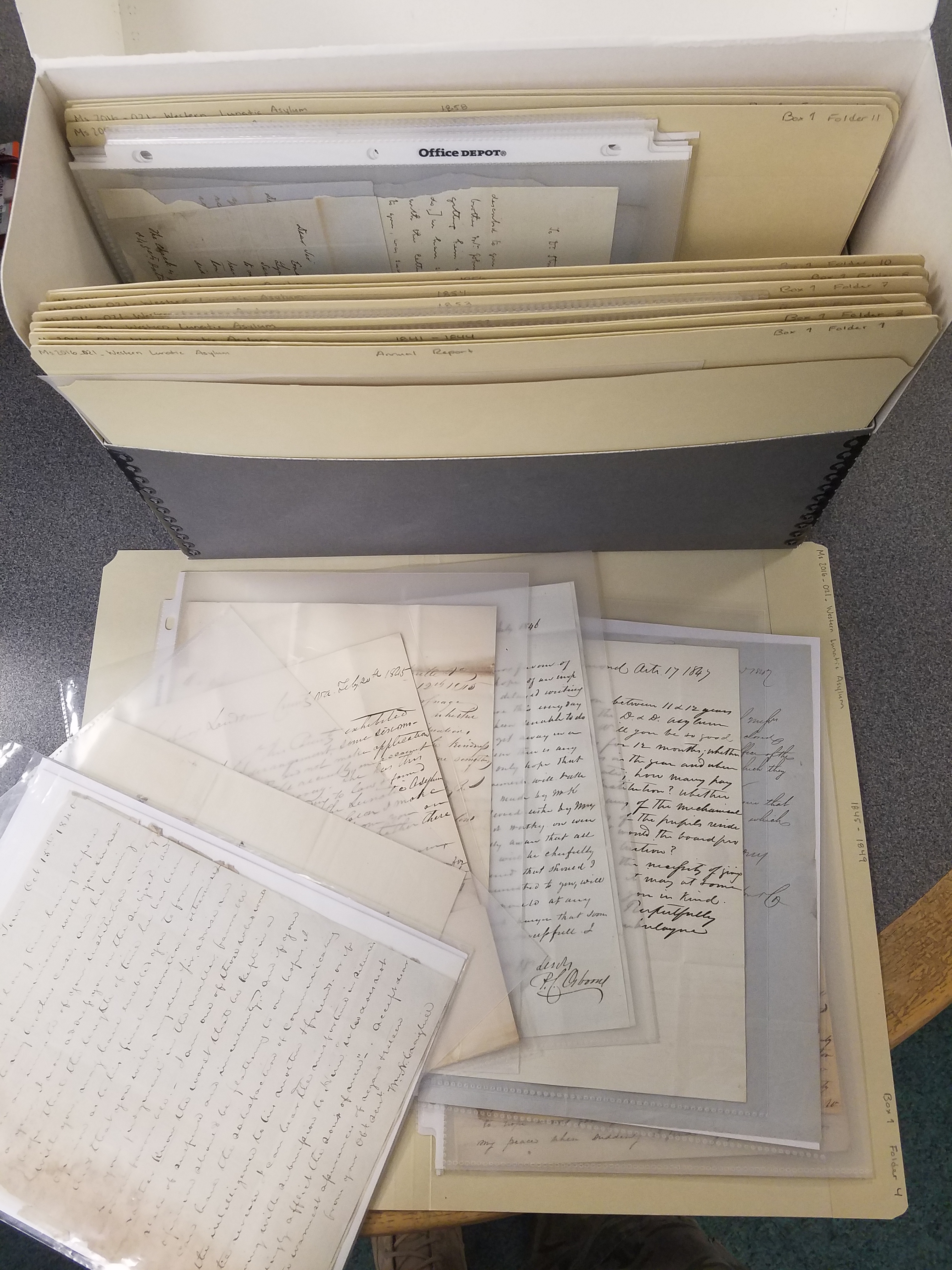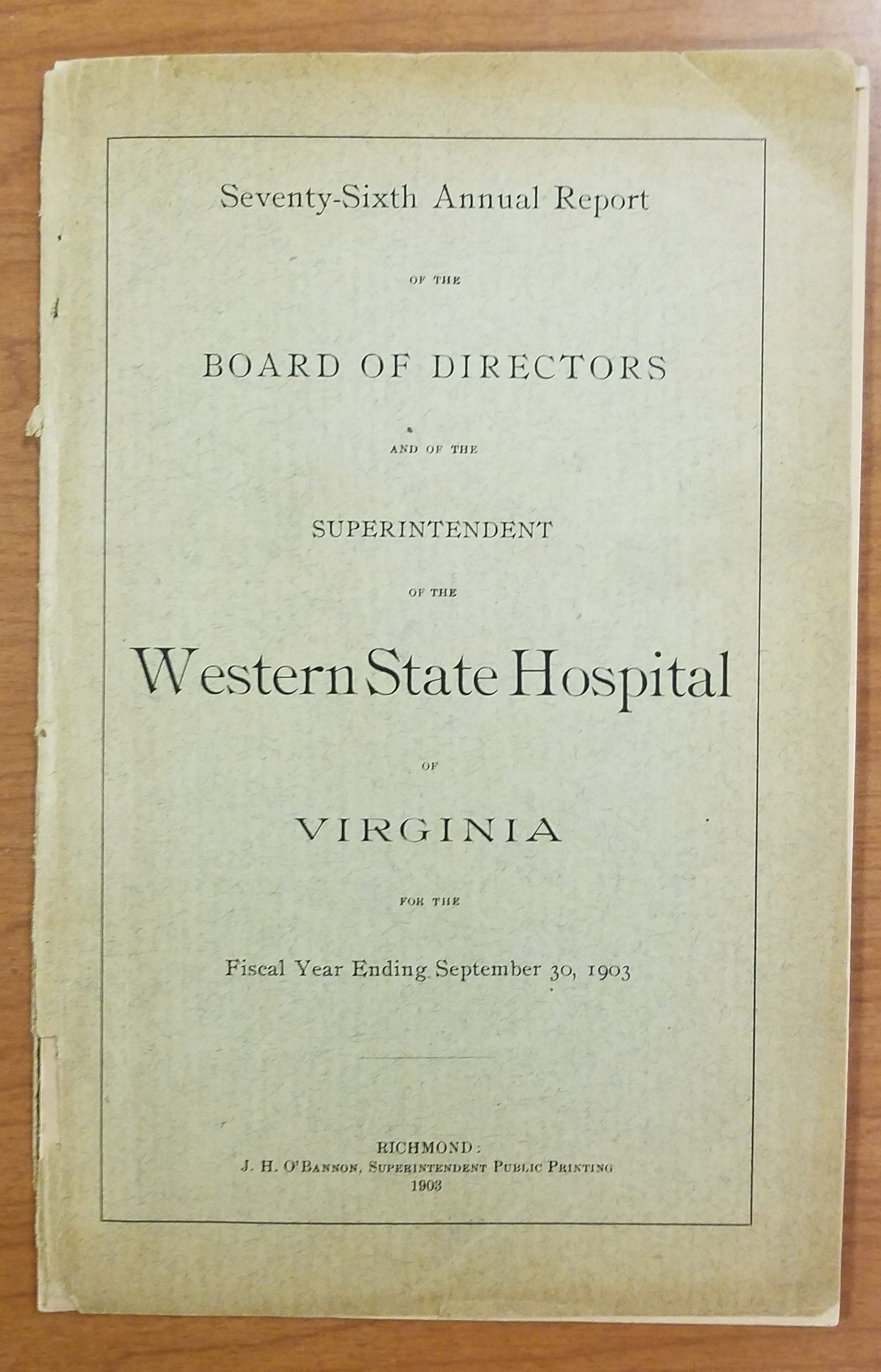Insane Asylums have been a part of horror movies and ghost stories for decades. From shows like American Horror Story to Shutter Island, there are many portrayals of what it was like to be treated for mental illness in the 1800-1900s. However, when it comes to the real story about old asylums, not all institutions were set up for jump scares.
The Western Lunatic Asylum was founded in 1825 by the Virginia State Government. It was the second mental health facility established in the Commonwealth and took patients that could not function in society but had hope of recovery. The first director of the hospital was Dr. Francis T. Stribling, who was also the first graduate of the University of Virginia Medical School. Stribling believed in humane treatment for those suffering from mental illness and applied the concept of Moral Medicine to his practice. Appointed in 1836, Stribling served as the director of the asylum until his death.
The Western Lunatic Asylum collection currently consists of an annual report from the asylum from 1903 and numerous letters written to Stribling between 1840 and 1868. This collection gives you an insight into what everyday life was like for the patients and family who were connected to this institution. It strips away all the haunted hallways and creaky doors and tells the stories of brothers, sisters, parents, and children whose loved ones are under Striblings care. It also gives you the chance to see into the mind of patients who were treated at the asylum when they write back to Stribling to discuss their condition.
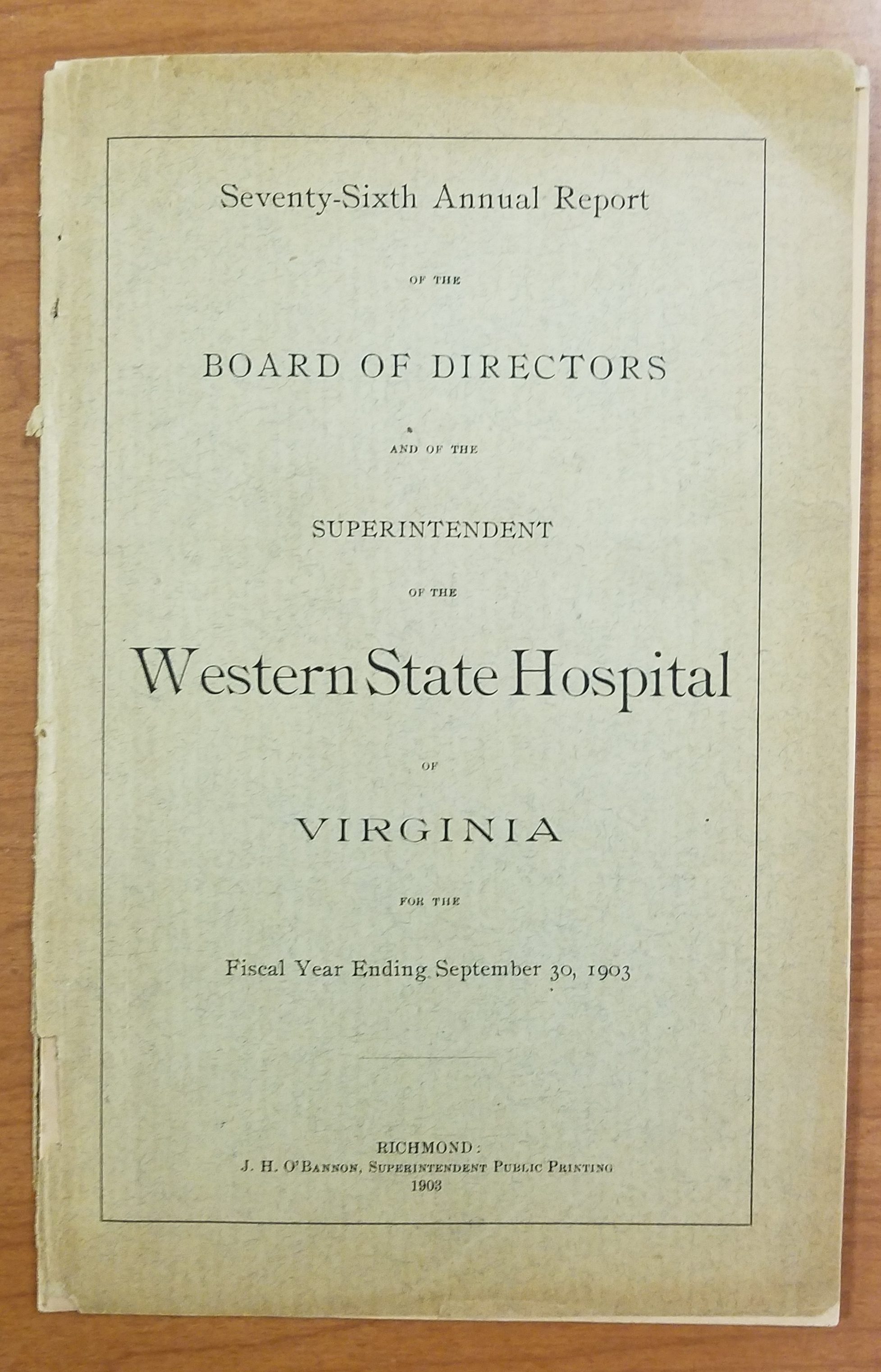
The annual report (pictured above) introduces this collection perfectly. Situated in the first folder of 14, it acts as an exposition chapter, setting up the scene. While the report is from a few decades after Striblings death, it helps you understand how they ran an institution like this. Some of my favorite highlights of the report are the section titled Occupation, Recreation, and Amusements which talks about how they divert the disordered minds of [their] patients again into normal channels by alternating their schedules between jobs around the asylum and entertainment like weekly dances, concerts, and games. The statistical tables are also fascinating, detailing information about how many people were admitted, what they were admitted for, and how long it took to cure those who recovered.
As mentioned above, there are two main types of letters in the collection: The Families and The Patients.
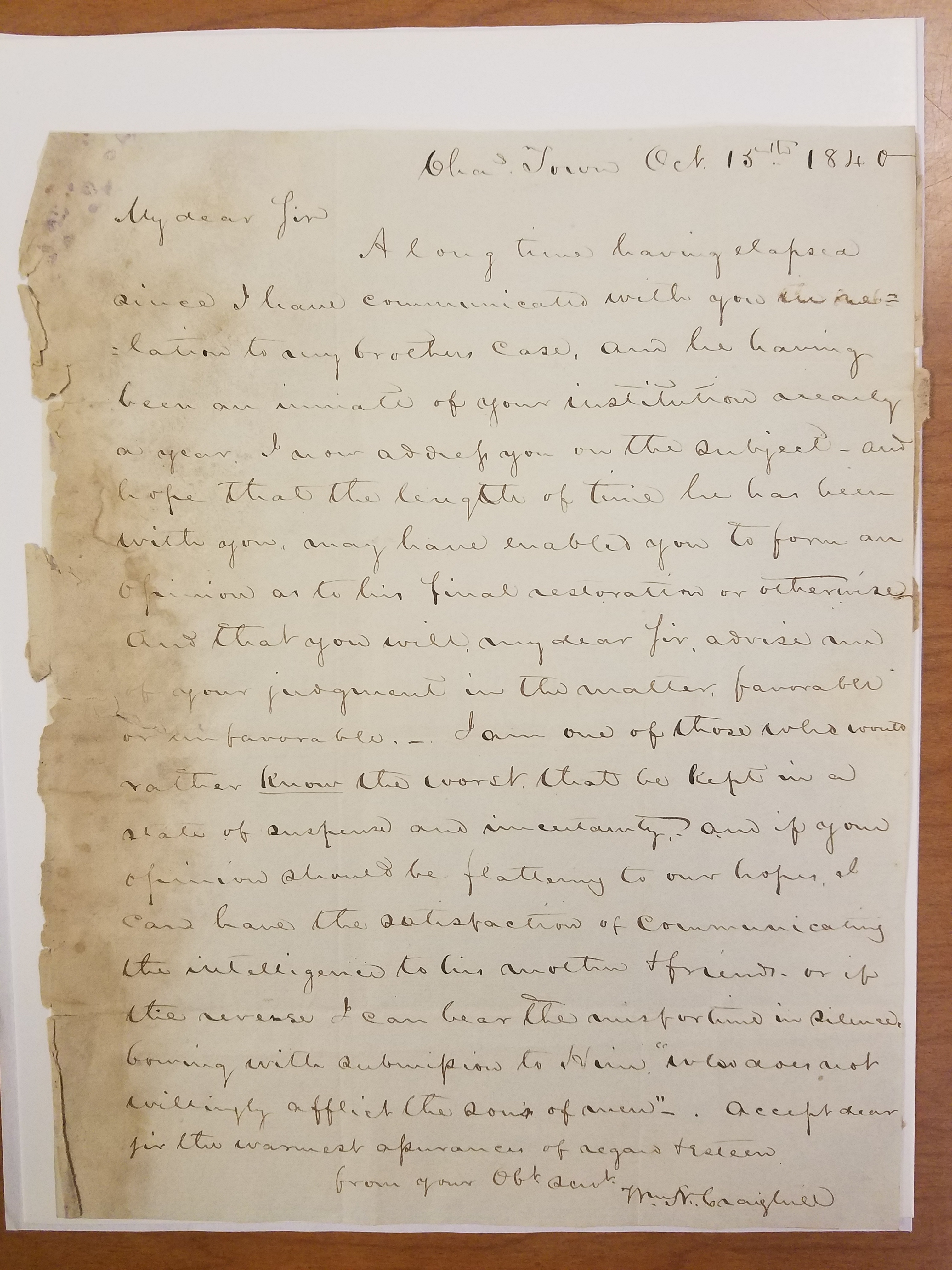
The letters from families range from those appealing to the doctor to admit a new patient to those asking about the status of current patients (Above). Many of those with family members in the asylum also mention sending money or clothes. Letters from former patients are primarily written to Stribling to update him on their status after being released from the hospital. Some are thriving and thankful, but most seem to write the doctor when they are experiencing symptoms of relapse like the one pictured below.
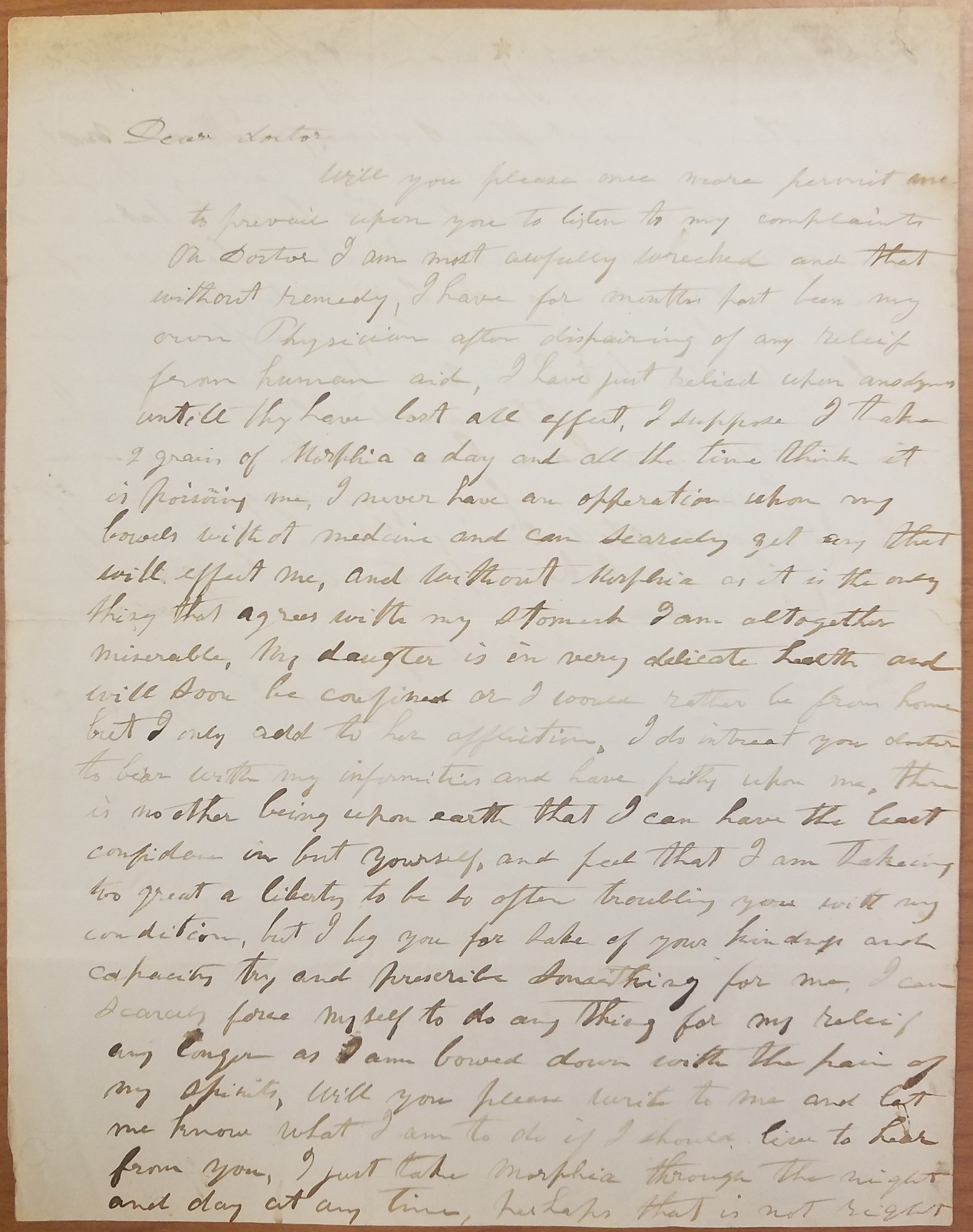
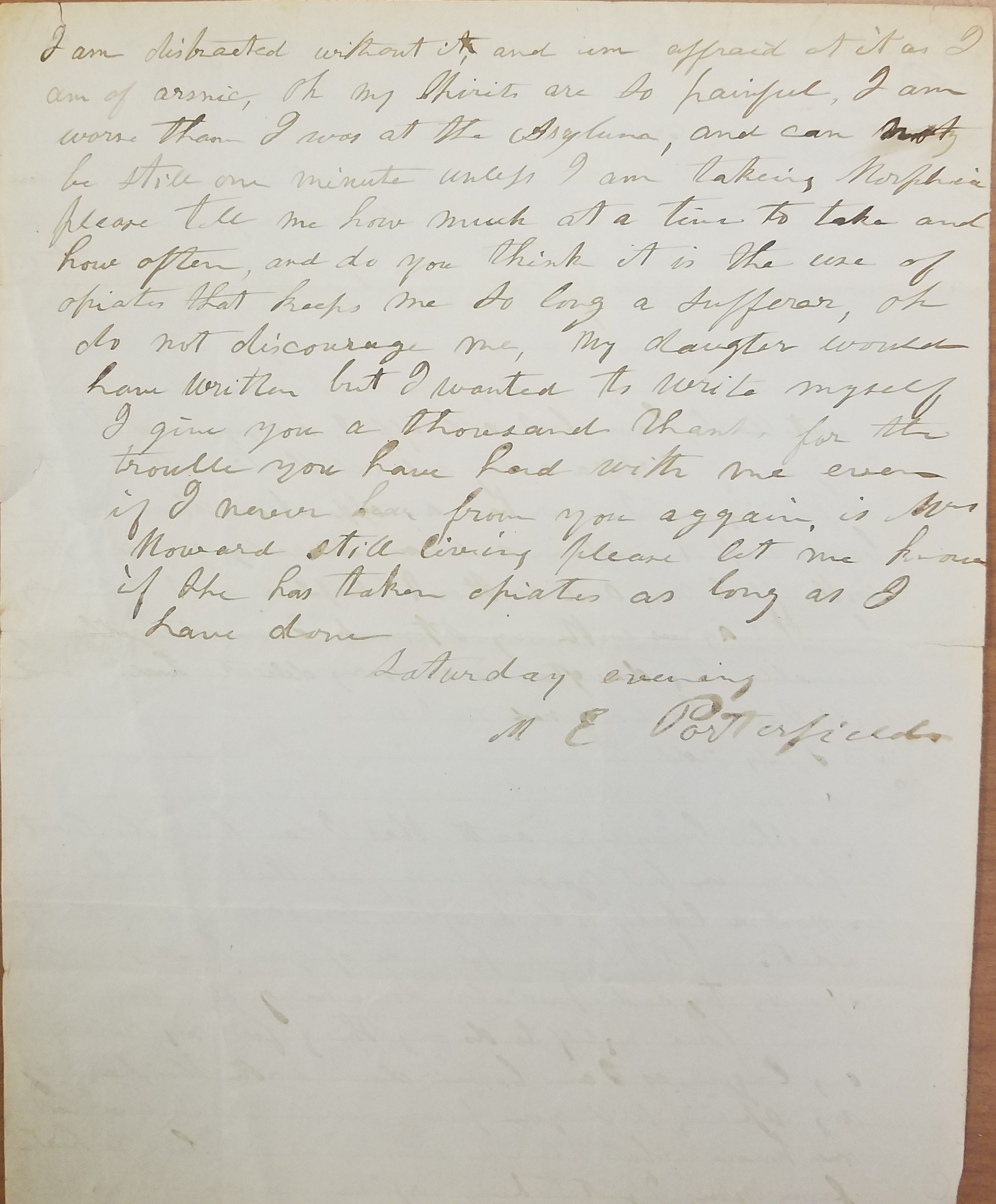
There are also a few business letters like the one below that informs Stribling of a woman that had “been examined according to laws & found to be a fit subject for the Lunatic Asylum at Staunton.”
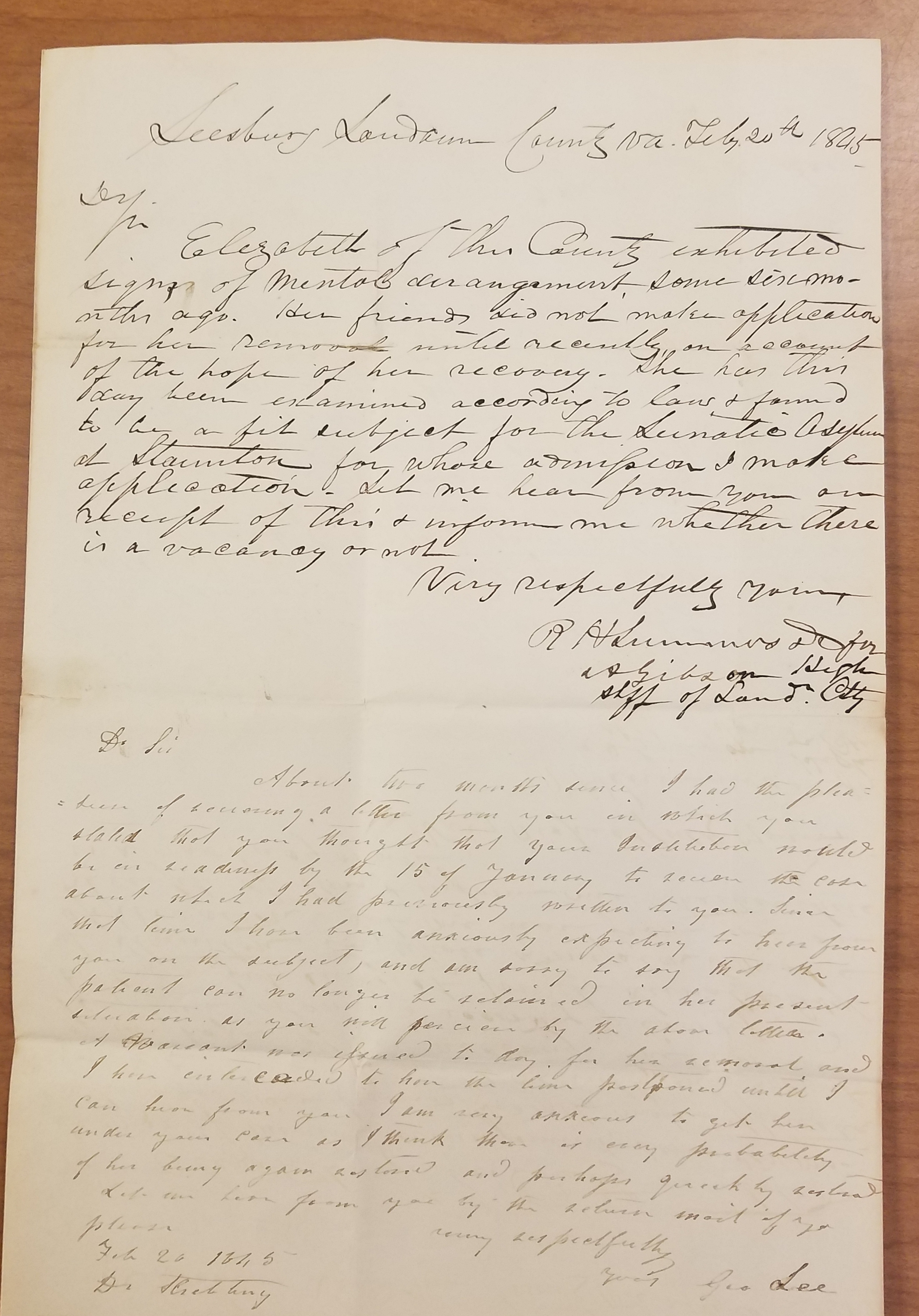
This collection really feels like a window into the past. After months of scanning and transcribing these letters, it feels living in a way, and that isnt just because we find new letters to add every other month causing it to continuously grow. Each time a new one comes in its a privilege to be able to read them and add that persons story to the rest of the collection.
